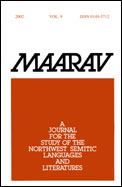[First poste in AWOL 7 November 2013, updated 26 August 2015]
Mesopotamian chronicles
Mesopotamian chronicles
The Assyrianand Babylonianchronicles are historiographical texts from ancient Mesopotamia. Although they contain references to the earliest times, they deal especially with the second half of the second and the entire first millennium down to the first century BCE (cf. this table).
On this page, you will find
- links to translations of all known chronicles; they are meant as a first introduction and for ready reference, but it is advisable not to quote them without consulting a printed edition, because many readings are still uncertain;
- new editions of the chronicles of the Seleucidand Parthianperiod; several of them have not been published before.
In the table below, yellow indicates a text written in, pink stands for Assyrian, blue for Babylonian.
Chronicles
CM 1+2 Sumerian King List Translation ABC 18 CM 3 Dynastic chronicle Translation CM 5 Assyrian King List Translation CM 6 Royal chronicle of Lagaš Translation ABC 19 CM 38 Weidner chronicle Translation ABC 20 CM 39-41 Early kings chronicle Translation CM 7 Tummal chronicle Translation CM 48 Uruk chronicle concerning the kings of Ur Translation CM 8 Assyrian Eponym List (second millennium) Translation ABC 23 CM 50 Market prices chronicle Translation ABC 21 CM 10 Synchronistic history Translation ABC 22 CM 45 Chronicle P Translation CM 11 Enlil-nirari chronicle Translation CM 12 Arik-den-ili chronicle Translation CM 46 Walker chronicle Translation CM 13 Tukulti-Ninurta chronicle Translation CM 14 Aššur-reša-iši chronicle Translation CM 15 Tiglath-pileser I chronicle Translation ABC 24 CM 47 Eclectic chronicle Translation ABC 17 CM 51 Religious chronicle Translation CM 9 Assyrian Eponym List (first millennium) Translation CM 52 Chronographic document concerning Nabu-šuma-iškun Translation ABC 1 CM 16 Period from Nabu-Nasir to Šamaš-šuma-ukin Translation ABC 1B CM 17 Period from Nabu-Nasir to Esarhaddon Translation ABC 14 CM 18 Esarhaddon chronicle Translation ABC 15 CM 19 Šamaš-šuma-ukin chronicle Translation ABC 16 CM 20 Akitu chronicle Translation ABC 2 CM 21 Early Years of Nabopolassar chronicle Translation ABC 3 CM 22 Fall of Nineveh chronicle Translation ABC 4 CM 23 Late years of Nabopolassar chronicle Translation ABC 5 CM 24 Early Years of Nebuchadnezzar chronicle Translation ABC 6 CM 25 Third year of Neriglissar chronicle Translation ABC 7 CM 26 Nabonidus chronicle Scholarly edition Translation CM 53 Chronographic document concerning Nabonidus Translation Cyrus Cylinder Scholarly edition Translation ABC 9 CM 28 Artaxerxes III chronicle Translation ABC 8 CM 29 BCHP 1 Alexander chronicle Scholarly edition Translation BCHP 2 Alexander and Arabia chronicle Scholarly edition ABC 10 CM 30 BCHP 3 Diadochi chronicle Scholarly edition Translation CM 31 BCHP 4 Alexander and Artaxerxes Fragment Scholarly edition Translation ABC 11 CM 32 BCHP 5 Antiochus I and Sin temple chronicle Scholarly edition BCHP 6 Ruin of Esagila chronicle Scholarly edition ABC 13A CM 36 BCHP 7 Antiochus, Bactria, and India chronicle Scholarly edition BCHP 8 Juniper garden chronicle Scholarly edition ABC 12 CM 33 BCHP 9 End of Seleucus I chronicle Scholarly edition ABC 13 CM 34 BCHP 10 Seleucid Accessions chronicle Scholarly edition BCHP 11 Invasion of Ptolemy III chronicle Scholarly edition ABC 13B CM 35 BCHP 12 Seleucus III chronicle Scholarly edition BCHP 13 Politai chronicle Scholarly edition BCHP 14 Greek Community chronicle Scholarly edition BCHP 15 Gold theft chronicle Scholarly edition BCHP 16 Document on land and tithes Scholarly edition CM 37 BCHP 17 Judicial chronicle Scholarly edition BCHP 18A/B Chronogr. doc. conc. Bagayasha B/A Scholarly edition BCHP 18C Chronogr. doc. conc. Bagayasha C Scholarly edition BCHP 19 Chronicle concerning an Arsacid king Scholarly edition BCHP 20 Euphrates chronicle Scholarly edition Additional documents
CM 42 Kings of the Sealand Translation CM 43 Samsuiluna fragment Translation CM 44 Another Samsuiluna fragment Translation CM 27 Fragment of a Neo-Babylonian chronicle Translation Nabonidus Cylinder from Sippar Translation Dynastic Prophecy Translation Antiochus Cylinder Scholarly edition CM 4 Babylonian King List of the Hellenistic Period Scholarly edition Translation Uruk King List Scholarly edition Translation Astronomical diaries
Diary concerning Artaxerxes II Mnemon Scholarly edition Diary conc. Gaugamela Scholarly edition Translation Diary conc. the second year of Philip Arridaeus Scholarly edition Diary conc. the 7th year of Alexander IV Scholarly edition Diary conc. SE 66 Scholarly edition Diary fragment on Demetrius and Arabia Scholarly edition Diary fragment on "messengers of the politai" Scholarly edition Arsacid diary fragment on politai Scholarly edition
There are no scholarly editions of the non-BCHP-chronicles on this page, nor will there ever be, because that would be a copyright infringement. For the original (usually Akkadian) text and commentaries, you must therefore consult Grayson's or Glassner's book. The translations offered here are free adaptations from ABC and CM; the spelling of personal names has been harmonized, variants have been ignored, explanatory notes have been added, uncertain readings have not been indicated. In short, these pages are no subsitute for ABC or CM.











 at Thebes
at Thebes









